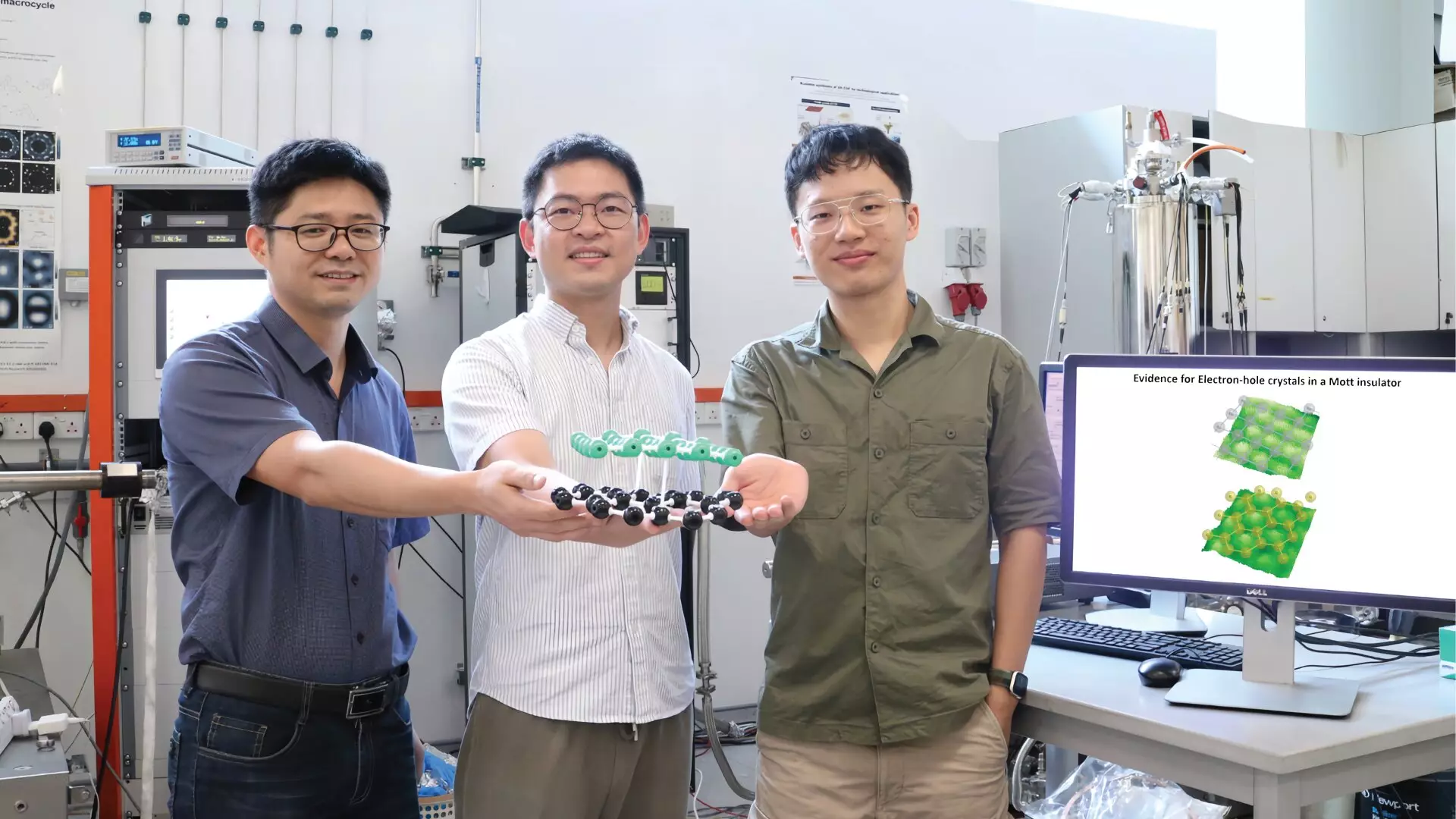The intricate behavior of electrons within materials has long fascinated scientists, particularly when they arrange themselves into what can be described as an “electron crystal.” This phenomenon occurs when the electron count aligns perfectly with the lattice sites available in a given medium, resulting in profound collective interactions. The orderly patterns formed can serve as a foundation for a variety of applications in quantum simulations, showcasing a symphonic dance of fundamental particles that has the potential to reshape our understanding of quantum dynamics. Not only does this behavior reveal new insights into material properties, but it also serves as a stepping stone towards advanced technological innovations, including quantum computing.
The dynamics become even more intriguing when we introduce holes, the positive counterparts to electrons, into the mix. Together, electrons and holes can create exotic quantum states characterized by unique properties. One such phenomenon is counterflow superfluidity, whereby these opposing forces move in tandem yet in opposite directions, achieving energy dissipation-free flow. However, the challenge lies in maintaining stability within the system. Electrons and holes tend to recombine rapidly, complicating the formation of stable electron-hole structures.
Navigating Complexity: Challenges of Electron-Hole Coexistence
Despite the promise of electron-hole crystals, actualizing them within a single natural material has proven to be a daunting task. The scientific community continues to grapple with a lack of empirical evidence to support the existence of stable electron-hole states in unified systems. Many experiments separate electrons and holes into different layers, which, while fruitful in demonstrating their coexistence, falls short of revealing these interactions within a singular matrix.
Recent groundbreaking research from a team at the National University of Singapore (NUS) under the leadership of Associate Professor Lu Jiong has challenged traditional boundaries. They have achieved what many thought impossible: directly visualizing electron-hole crystals within a Mott insulator—specifically, Alpha-ruthenium(III) chloride (α-RuCl3). Not only does this provide a tangible manifestation of electron-hole interactions, but it also offers a robust framework for exploring quantum excitonic states that could redefine future computing paradigms.
The Role of Innovative Techniques in Quantum Research
Central to this revolutionary discovery is the innovative application of scanning tunneling microscopy (STM). Traditionally limited to studying conductive materials, researchers ingeniously combined graphene—a single layer of carbon atoms—with the Mott insulator α-RuCl3. This approach enables the examination of the electronic structure of the insulator while also facilitating a non-invasive method for electrochemical gating of the material.
Using STM, the research team employed an ingenious configuration that permitted the visualization of two distinct ordered electron-hole patterns at varying energy levels. Each band—the lower and upper Hubbard bands—exhibited unique periodicities and symmetries. The team was able to manipulate carrier densities, demonstrating the potential to control the transition between these states through electrical gating.
This ability to visualize crystal formations at an atomic scale offers unprecedented insights, enabling the study of charge orderings and the understanding of how electron-hole interactions manifest in real time. Assoc. Prof. Lu Jiong articulated this achievement, revealing that their data suggested the simultaneous emergence of distinct orderings—a finding that was unexpected yet pivotal in the quest to comprehend the underlying physics of Mott insulators.
Implications for the Future of Computing
The implications of these findings are profound and far-reaching. The ability to observe and manipulate electron-hole crystals at the atomic level opens new avenues for understanding and controlling material states. The potential for new technological advancements could lead to materials capable of rapid state-switching, significantly impacting the efficiency of computing technologies. This research hinges on the promise of in-memory computing and quantum computing paradigms—fields that demand superlative performance and reliability.
Moreover, Assoc. Prof. Lu emphasized the future pursuit of controlling these electron-hole crystals using electrical signals, heralding a new era of research that combines cutting-edge materials science with quantum physics. The intrigue lies not just in their current application but in the myriad ways future materials could advance our capacity to simulate complex quantum phenomena, paving the way for new discoveries that transcend today’s technological limitations.
The discovery of electron-hole crystals in α-RuCl3 not only validates theoretical predictions but also encourages a reevaluation of existing materials as keys to unlocking the next generation of quantum technologies. The ripple effects of this research may extend from academic spheres directly into the practical applications of computing, proving once again that the microscopic world holds immense potential waiting to be explored.


Leave a Reply